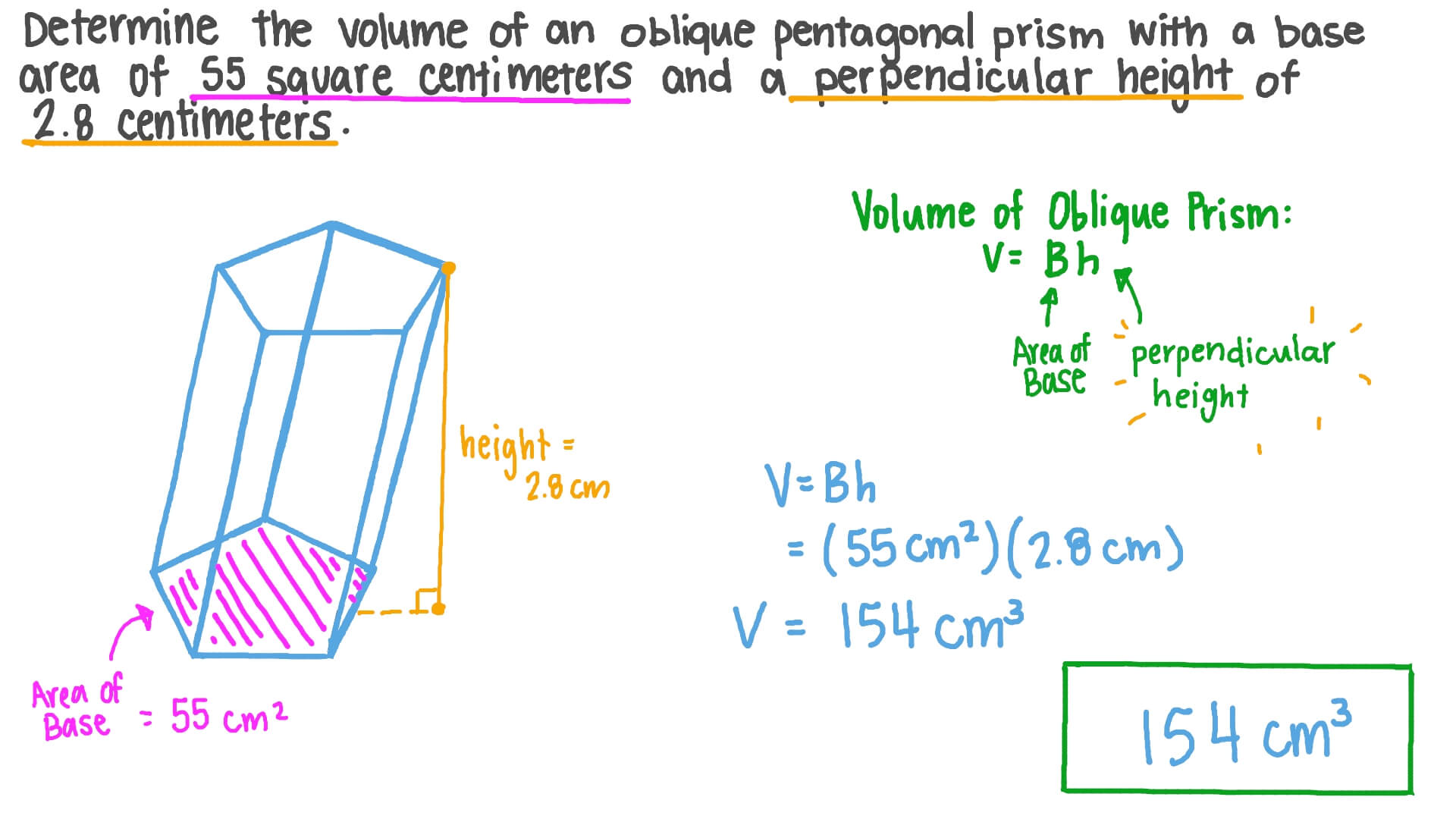

Once you understand that a rectangular prism includes some sets of identical shapes, it's much easier to find its surface area and volume. Rectangular Prism Volume and Surface Area With volume, your answer should be in terms of units squared. Let's use this formula to determine the volume of this prism, which must be expressed in cubic centimeters (cm³): So to get the final volume, you must multiply the height of the rectangular prism by the area of the base. The area of the base is the length times the width. Volume is the amount of space that a three-dimensional figure takes up.
#Volume of a square prism how to#
Now that we know how to find the surface area, let's move on to finding the volume of the rectangular prism. If you need a refresher about the order of these calculations, remember the order of operations through the acronym PEMDAS ( here’s how this works).įor surface area, always keep your answer in square units. Let's use this formula to find the surface area of the rectangular prism below: Here is the formula for the surface area of a prism: The surface area of a rectangle in prism form is the sum of the areas of all six shapes. The length, width, and height of a rectangular prism are made by six separate shapes that, when put together, creates a three-dimensional figure. Let's review the surface area of a rectangle. How to Find the Surface Area of a Rectangular Prism Let's learn how to find the surface area and volume of a rectangular prism. Other examples of prisms include triangular prisms, square prisms, and polygon prisms: For an oblique rectangular prism, the height is the perpendicular distance from any point on one base to the other base.How do you determine rectangular prism volume and surface area? Let's start by defining what this shape is.Ī rectangular prism is a three-dimensional shape with two identical rectangular faces and one identical square face:

For a right rectangular prism, the height is its vertical edge. Where l is the length of the base, w is the width of the base, and h is the height of the prism. A right square prism is a right rectangular prism with square bases.A cube is a right rectangular prism with all square faces.

There are also rectangular prisms that have specific names based on their characteristics: A right rectangular prism is also called a cuboid. A rectangular prism that doesn't meet these conditions is instead an oblique rectangular prism. A right rectangular prism has bases that are perpendicular to its lateral faces, meaning that they meet at right angles. Rectangular prisms can be classified based on how their bases and lateral faces intersect or meet. This is true for any cross section parallel to the faces of a rectangular prism. They are congruent to the two rectangular bases of the prism since they are formed by cross sections that are in planes parallel to the bases. Two rectangular cross sections for the rectangular prism are shown in green above. Any cross section that is parallel to a face of a rectangular prism has the shape of a rectangle or parallelogram and is congruent to the face. The opposite faces are parallel and congruent to each other. The 12 edges of a rectangular prism are in 3 groups of parallel lines. A rectangular prism has 12 edges and 8 vertices. Characteristics of a rectangular prismĪ rectangular prism is enclosed by six faces consisting of two rectangular bases and four lateral faces in the shape of a parallelogram. A box, an eraser, and an aquarium are all examples of real life objects that can be in the shape of a rectangular prism. Below are a few examples of rectangular prisms.Ī rectangular prism is a shape that is commonly seen in everyday life. The lateral faces of a rectangular prism are parallelograms. Home / geometry / shape / rectangular prism Rectangular prismĪ rectangular prism is a prism with rectangular bases.


 0 kommentar(er)
0 kommentar(er)
